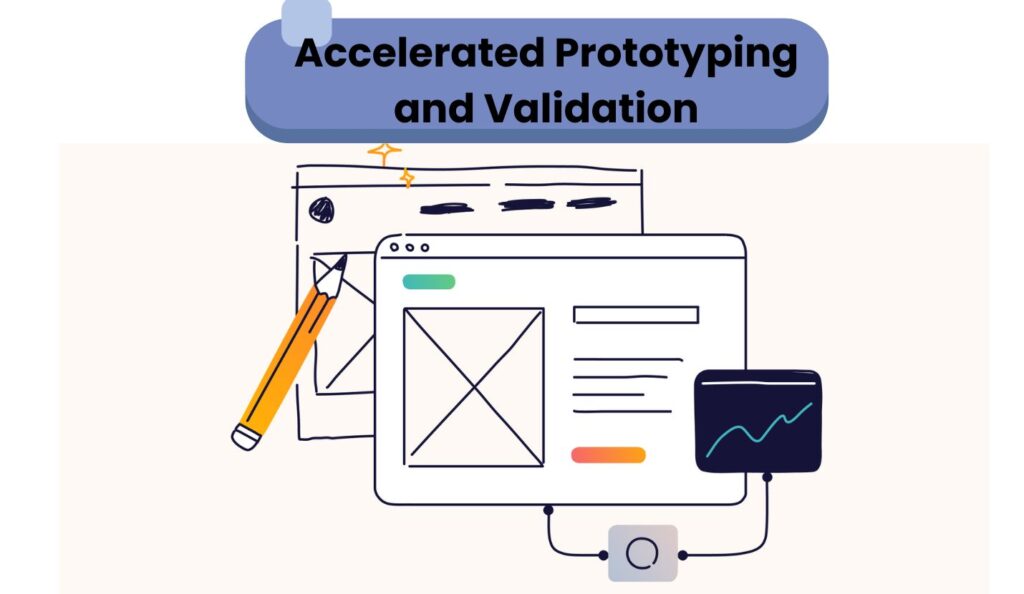TL;DR
- No-code platforms drastically reduce development time, enabling rapid prototyping and faster market entry for new products.
- They democratize product creation, allowing non-technical founders and small teams to build sophisticated applications.
- Integrating AI into no-code workflows unlocks advanced capabilities like automation, personalization, and data analysis.
- Strategic use of internal linking within no-code apps enhances user experience and SEO.
- Choosing the right no-code platform involves considering scalability, integration capabilities, and community support.
The Product Development Paradigm Shift: My No-Code Revelation
For years, product development felt like a high-stakes game reserved for those fluent in complex programming languages. Ideas would spark, but the sheer barrier of coding knowledge, development costs, and glacial timelines often extinguished them before they could truly ignite. Then, I discovered the power of no-code platforms, and it wasn’t just a small improvement; it fundamentally changed how I build products – for the better.
This isn’t just about drag-and-drop interfaces; it’s about a complete paradigm shift that democratizes innovation, empowers rapid iteration, and allows even non-technical founders to bring their visions to life. From conceptualization to launch, the journey became faster, more flexible, and infinitely more accessible.
Launch Your App Today
Ready to launch? Skip the tech stress. Describe, Build, Launch in three simple steps.
BuildAccelerated Prototyping and Validation

One of the most profound impacts of no-code has been the ability to rapidly prototype and validate product ideas. In the past, building an MVP (Minimum Viable Product) could take months, requiring significant investment in developers and resources. With a no-code platform, I’ve seen ideas go from concept to functional prototype in days, sometimes even hours. This speed is invaluable for validating market demand, gathering early user feedback, and pivoting quickly if necessary. It means less wasted time and resources on ideas that might not resonate with users.
Consider the typical startup journey: an idea, followed by months of development, then a launch, and *then* the feedback loop. No-code flips this, allowing for continuous, almost instantaneous feedback. You can launch your SaaS in 30 days, get real users, and refine your product in real-time. This agile approach is critical in today’s fast-paced digital landscape.
Empowering the Non-Technical Founder
Perhaps the most liberating aspect of no-code is its ability to empower individuals without a traditional coding background. I’ve witnessed countless stories of non-technical founders building successful products. This isn’t just about small internal tools; it’s about creating complex, scalable applications that compete with traditionally coded solutions.
For instance, imagine a solo entrepreneur wanting to build a robust CRM. Historically, this would be a monumental task. With no-code, they can build a custom CRM tailored to their specific needs, integrating various functionalities like client management, task automation, and reporting, all without writing a single line of code. This newfound independence fosters a culture of innovation and experimentation that was previously unattainable for many.
Integrating AI: Supercharging No-Code Capabilities
The true magic happens when no-code meets AI. Modern no-code platforms often come with native AI capabilities or seamless integrations with AI APIs. This allows for the creation of incredibly intelligent and automated products. Think about:
- Building customer service chatbots that handle inquiries 24/7.
- Automating data analysis and visualization to derive insights faster.
- Implementing AI-driven personalization for web applications.
- Creating advanced e-commerce websites with AI-powered features.
The combination of no-code’s speed and AI’s intelligence means products are not only built faster but are also smarter and more efficient. It’s a game-changer for businesses looking to automate their small business operations and gain a competitive edge.
Scalability and Maintenance Simplified
A common misconception about no-code is that it lacks scalability or is difficult to maintain. However, many enterprise-grade no-code platforms are built to handle significant user loads and complex functionalities. They offer robust backend infrastructure, secure data handling, and streamlined deployment processes. This means that as your product grows, your no-code solution can often grow with it, reducing the need for expensive re-platforming.
Moreover, maintenance becomes less about debugging intricate code and more about managing configurations and workflows. This reduces the dependency on highly specialized developers, making updates and improvements faster and more cost-effective. For those concerned about long-term viability, understanding scalable SaaS architecture for no-code platforms is essential.
The Future of Product Building is Accessible

My journey with no-code has been transformative. It has allowed me to experiment with more ideas, launch products faster, and focus on the core value proposition rather than getting bogged down in technical complexities. The ability to build AI apps without code is no longer a futuristic dream but a present-day reality that empowers creators, entrepreneurs, and businesses of all sizes.
Choosing the right platform is crucial, and it’s important to consider factors like the platform’s ecosystem, integration capabilities (for example, how to integrate AI with Airtable), and community support. The landscape of no-code and AI is evolving rapidly, with new tools emerging that offer even more sophisticated capabilities. For anyone looking to innovate, create, and launch products in the digital age, embracing no-code isn’t just an option; it’s a strategic imperative. It’s about turning ideas into tangible products with unprecedented speed and efficiency, truly making product development better for everyone.
Real-World Impact: Diverse Applications
The versatility of no-code platforms, especially when combined with AI, is truly remarkable. From travel and tourism brands launching apps to AI in agriculture for farm data analytics, the applications are endless. Even in sectors like healthcare, we see AI patient chatbots being built and deployed with no-code, streamlining patient interaction and support. This broad applicability underscores the power of these tools to drive innovation across industries.
Frequently Asked Questions
What is a no-code platform?
A no-code platform is a software development environment that allows users to create applications without writing any code. It typically uses visual interfaces with drag-and-drop components, pre-built templates, and intuitive logic builders to enable rapid application development.
How does no-code impact product development timelines?
No-code platforms significantly reduce product development timelines by eliminating the need for manual coding. This allows for rapid prototyping, faster iteration cycles, and quicker deployment of MVPs (Minimum Viable Products) to market, often cutting development time from months to weeks or even days.
Can no-code platforms integrate with AI?
Yes, many modern no-code platforms offer robust integrations with AI services and APIs, or even have built-in AI capabilities. This enables users to incorporate advanced features like natural language processing, machine learning, data analytics, and automation into their applications without complex coding.
Are no-code applications scalable for growing businesses?
Absolutely. While early no-code tools had limitations, today’s leading no-code platforms are designed for scalability. They often leverage cloud infrastructure, allow for database integrations, and support complex workflows, making them suitable for handling increased user loads and expanding functionalities as a business grows.
What are the main benefits of using a no-code platform for product building?
The main benefits include faster development and deployment, reduced costs, increased accessibility for non-technical users, greater flexibility for iteration and testing, and the ability to integrate advanced functionalities like AI without extensive coding knowledge.
Is no-code secure for sensitive data?
Reputable no-code platforms prioritize security and offer features like data encryption, user authentication, and compliance with industry standards (e.g., GDPR). However, it’s crucial for users to follow best practices for data handling and to choose a platform with strong security protocols and a good track record.
What kind of products can be built with no-code platforms?
A wide range of products can be built, including web applications, mobile apps, internal tools, CRMs, e-commerce stores, marketplaces, automation workflows, and even AI-powered chatbots and assistants. The versatility is constantly expanding.
How does no-code compare to low-code development?
No-code platforms require no coding at all, focusing on visual interfaces. Low-code platforms, while also using visual tools, allow developers to inject custom code for more complex or unique functionalities. Low-code bridges the gap between no-code and traditional coding, offering more flexibility but still requiring some technical expertise.
Launch Your App Today
Ready to launch? Skip the tech stress. Describe, Build, Launch in three simple steps.
Build




